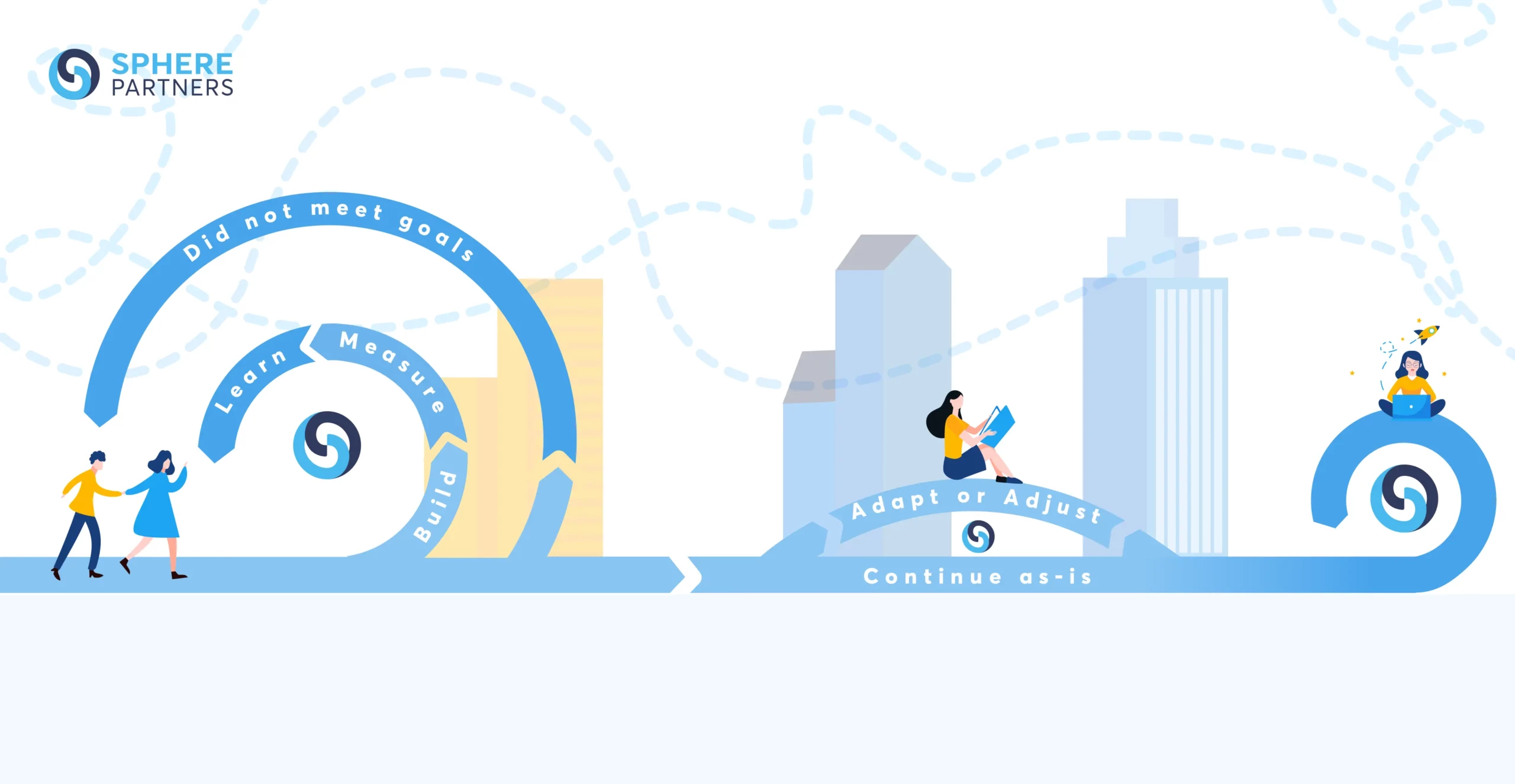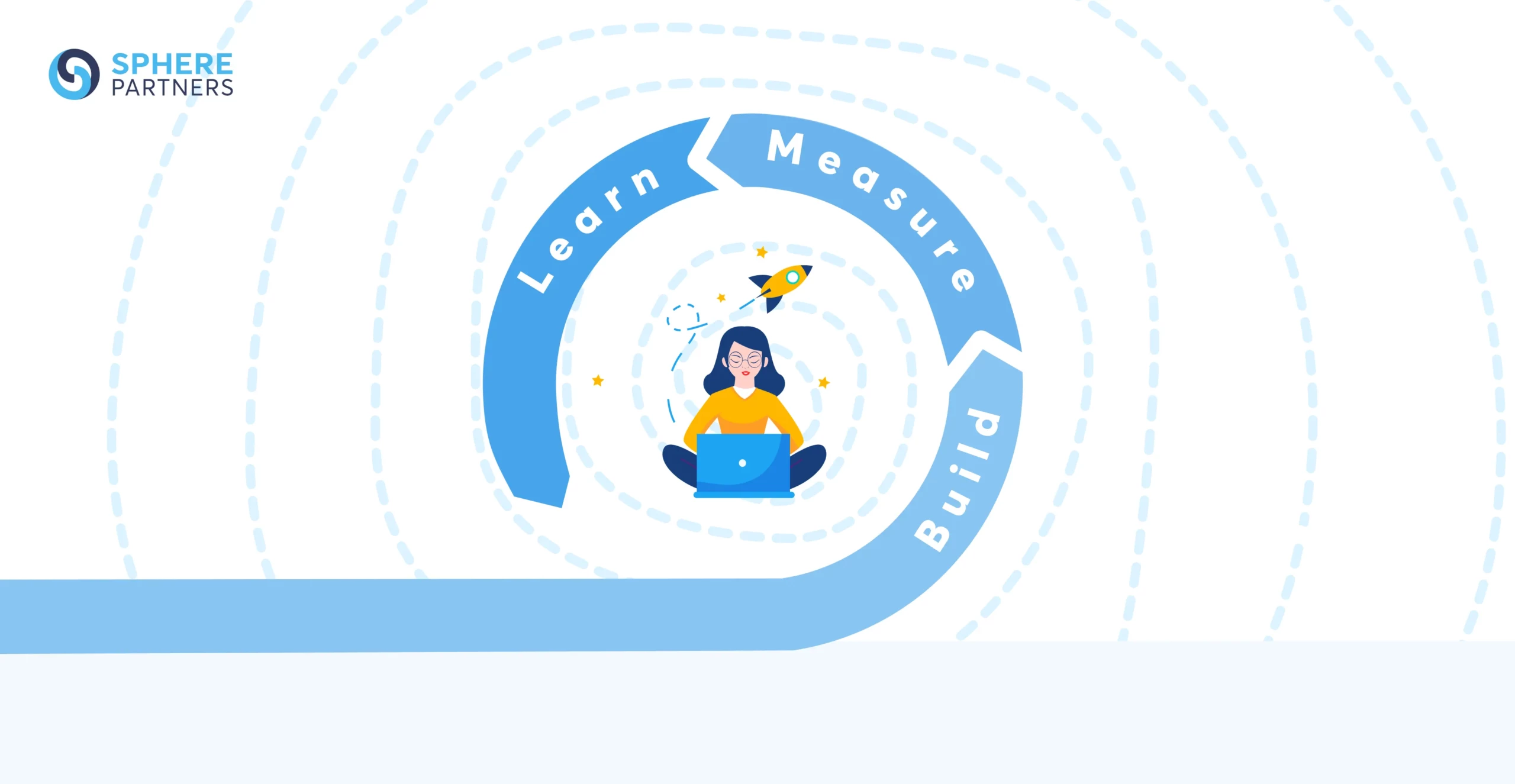A new product idea brings excitement and drive. You want to get it into customers’ hands and test it for the market. But how you create your product determines whether you’ll succeed or not.
Of course, you could take the traditional hit-or-miss approach:
- build your product fully,
- take it to market,
- invest in advertising, and
- take your chances with your customers.
Instead, you should use the lean startup approach that relies on an agile build-measure-learn cycle to create, test, and iterate your product—rapidly increasing your chances of success. Let’s look at build-measure-learn and how it applies to product development.
Build-Measure-Learn Defined
Build-measure-learn is a feedback mechanism at the heart of the Lean Startup Methodology.
Lean Startup Methodology is a product development cycle that is comprised of five essential principles summarized below:
- Entrepreneurial Mindset: This principle encourages entrepreneurs to adopt a proactive and agile mindset when developing their business.
- Validated Learning: The Lean Startup Methodology emphasizes the importance of gathering feedback and data from customers to validate assumptions and inform decision-making.
- Build-Measure-Learn: This principle emphasizes the importance of rapidly iterating on product development based on customer feedback.
- Innovation Accounting: This principle emphasizes the importance of tracking metrics that indicate progress towards key business goals.
- Continuous Improvement: The Lean Startup Methodology emphasizes the importance of continually refining and improving products and processes.
A minimum viable product (MVP) is your product’s initial version with the basic functionalities your customers require. By applying the build-measure-learn cycle to your MVP, you gain insights into how your product meets end-user needs and how to adjust if you miss the mark.
How Does Build-Measure-Learn Work?
Think of build-measure-learn as three phases of an iterative loop. Once you have your product idea in mind, follow these steps:
Step 1: Build
Design your MVP based on reliable and actionable data that captures the problem your solution intends to solve. Build the core version of your product and save the additional features for later. Then place your MVP in the end user’s hands to gather business and technology feedback about the prototype.
Step 2: Measure
Run data analysis to determine whether your MVP as-designed achieved the desired outcomes. Organize and present this data in a user-friendly format for all shareholders to understand. In this step, you’ll discover positive and negative information about your MVP that informs decision-making.
Step 3: Learn
Given the knowledge gathered in step 2, determine whether you should stay on course with development (persevere) or adjust your strategy (pivot). Base your decision on end-user feedback. If your product resonates with your customers, repeat the cycle by building and testing additional features to gather data and feedback. If your MVP fails to validate your idea, you should stop your development process altogether to reevaluate and rebuild.

Importance of Build-Measure-Learn
The build-measure-learn cycle is a systematic product development process that puts customer needs first. It not only determines how to build the right products but questions if you should build the product in the first place, and if you should continue to build at each iterative step. As you incorporate user feedback into the development process, you provide the best solution that continually grows and improves.
Benefits of The Build-Measure-Learn Cycle
Here are the main reasons why build-measure-learn works well for MVP development.
- Faster development process: You begin with an MVP and add features over time rather than building a complete, complex product.
- Client focus: All product iterations rely on feedback from real-world users to deliver a solution that meets their specific needs.
- Better use of resources: You build only what’s necessary and abandon unwanted functions, saving time and money.
- Consistent fine-tuning: Build-measure-learn produces unique, fully customized solutions that improve with each subsequent version.
- Lean philosophy: Since build-measure-learn is an agile development method, its principles can inform other business functions to reduce risk and adapt to market conditions.
- Clarity: You can set small, manageable development goals with targeted tests and feedback, eliminating the uncertainty and risk of going to market.
Build-Measure-Learn Example
A typical example of build-measure-learn is in mobile app development. Here are two scenarios to explain the agile approach.
Scenario 1: Startup X has an idea for a mobile app. They write the concept in detail in their business plan, design the app, and write its code. In about six months to a year, the development and testing are complete. Startup X takes the app to the marketplace and launches a sales and advertising campaign to reach customers.
Unfortunately, once released, the app doesn’t receive the interest and feedback that startup X was expecting. Users complain about certain features of the app and point out a key aspect that’s missing. Startup X failed to envision and incorporate it during the initial ideation phase, thus failing to hit the mark. Having relied on and exhausted its front-loaded investment, it no longer has enough funding to proceed with the changes necessary to meet customers’ needs.
Scenario 2: Startup Y also has an idea for a mobile app, but they begin with a brief business plan (build phase). They present their app idea to potential customers and ask if the proposed features serve their needs and if they’d be willing to pay for it (measure phase).
With this feedback, they revise the business plan (learn phase) and develop key solutions from the MVP for testing (build phase). Then, they show the prototype to customers (measure phase), gather relevant feedback, and determine their course of action (learn phase).
While the customers like the app, they believe that certain aspects of it could be changed or improved. So, the developers iterate and improve the app (build phase) and then present the updated version to customers again for more feedback (measure phase). This process continues until company Y determines its app is ready for launch.
This initial entire cycle can take less than a month to complete and prior to any significant investment. Thus, startup Y can use the funding to develop an app that customers actually need and like, significantly increasing their chances of success.
As you can see, Startup X has taken a gamble with their product and requires significant investment in sales and marketing to gain customers. In contrast, Startup Y uses the build-measure-learn cycle to develop an app that customers need and incorporates their feedback into future versions. This approach is more efficient based on quantifiable metrics to guide business decisions.
Bring Your Idea to Life with Sphere Partners
Do you have an app idea that needs an MVP? Or have you tried other development methods and faced numerous challenges going to market? Sphere Partners will help you turn your concept into an industry game changer.
We follow the build-measure-learn principles in MVP software development and acceleration from formulating your idea into a business plan to coding, validation, iteration, and continuous support. Our team of experts has over 15 years of experience building prototypes, so you can rely on excellent communication, clear goals, and actionable metrics throughout the MVP development process. Contact us to discover how the build-measure-learn cycle applies to your app concept today.





